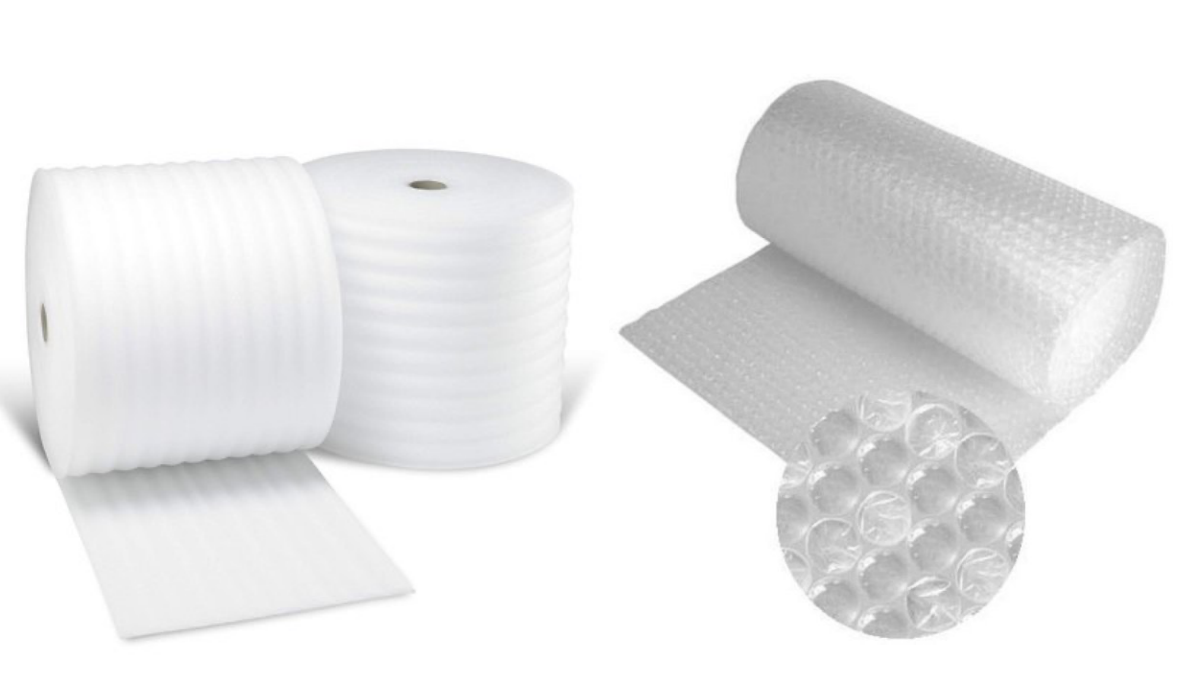
When it comes to packing goods for transport or shipping, packing foam roll and bubble wrap offer advanced solutions to ensure the integrity of the product upon receipt. Thus, both packaging materials offer the possibility of protecting the merchandise at a low price and with excellent properties.
However, although they are very similar materials, they can present advantages or disadvantages depending on the type of product to be packed and preserved. Therefore, so that you do not make a mistake in your choice when it comes to protecting your merchandise, today we tell you the main differences between both packaging products.
Because, as always, planning the small details can lead to long-term cost savings… And that’s what it’s all about, right?
Table of Contents
Bubble wrap, a versatile option
Bubble wrap has considerable advantages, since in exchange for a low it offers insulation, impermeability and plasticity. It can also be found in different formats, such as rolls, pre-cut or in bubble wrap dispenser boxes. For small and delicate objects – such as electronic components – bubble envelopes can be found.
What products is it usually used for? It depends on the size of the bubble, but it can be used for all types of merchandise, highlighting the fragile ones such as electronic products.
What kind of products is it not suitable for? As you will see, bubbles offer protection for practically any type of merchandise, however, it is not recommended for products with a highly polished surface, as scratches can occur. On the other hand, this type of plastic has a high static electricity charge.
Packaging not suitable for: glass, metal or varnished wood.
Types of plastic bubbles: today you can find a large number of types of antistatic or isothermal plastic bubbles, among others.
Packing foam: A booming option
Less popular than bubble wrap, packing foam offers excellent protection, low cost, and its smaller volume saves space. Unlike bubble wrap, it is not an abrasive material so it does not scratch or leave marks; so it is perfect for glass, metal or wood.
Another of the big differences with respect to bubble packaging is that it does not generate static electricity; something recommended for electronic or sensitive products with electricity.
This material is perfect for corner protection,
In what formats can you find packing foam? Mainly in rolls and plates, although you can also order custom formats if your supplier allows it.
Can it be reused? Yes, and it does not lose its properties.
Then…
What material is best for me?
Knowing the properties and uses of each material, the final decision depends on your needs and the merchandise to be packed. On the one hand, bubble packaging has excellent damping properties, but is incompatible with delicate surfaces.
Regarding the protection with foam, it occupies less volume in the packaging, it does not present a static charge and it is perfect for delicate materials such as glass, metal or wood. An inconvenience? The cushioning is not as good as in bubble wrap.
The price? Both options are very economical and have similar prices, where the value for money is excellent. For your info, you can buy various affordable bubble wraps and packing foam rolls from BlueRose Packaging, the best packaging company in California.
In the end, another advantage of both materials is the possibility of customization and adaptation to your merchandise.